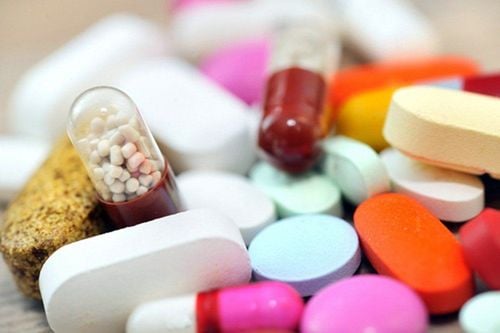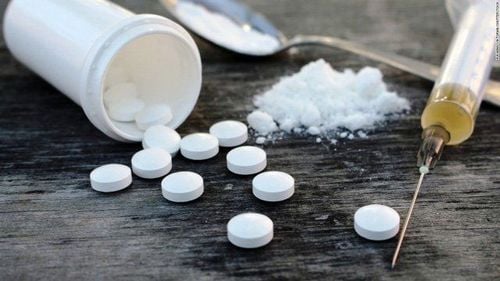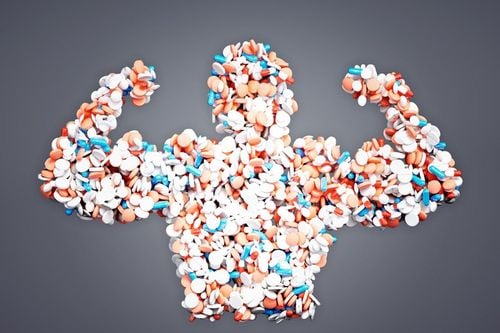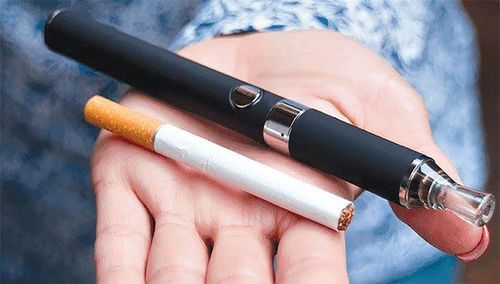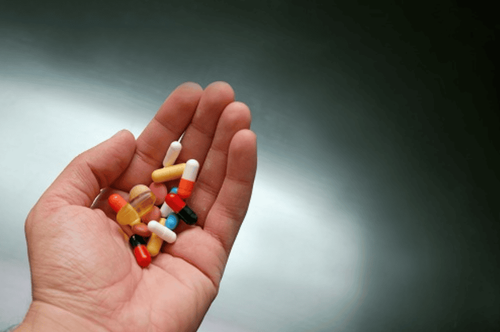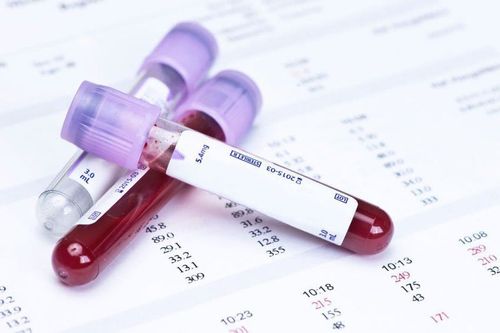This is an automatically translated article.
Article written by Doctor of Emergency Department - Vinmec Phu Quoc International General Hospital
Currently, the problem of using addictive substances other than heroin is becoming more and more painful, leading to a series of cases caused by substance abuse. Drugs other than heroin include: Amphetamines, marijuana, synthetic drugs,...
1. Opiate Poisoning
Heroin is the most common addictive opiate. In emergency rooms, opiate abuse more than doubled between 1990 and 1995.
Opiate overdose occurs in people who are new to addiction and in people who have been addicted for a long time but have stopped using and become incapacitated. tolerance, as the purity of the commonly used drug increases and when stronger opiates (eg, fentanyl) are substituted for heroin.
Sometimes severe overdose occurs in people who swallow bags of heroin. The history of heroin addiction is often recounted from the patient, the patient's friends, family, or from hospital records.
Manifestations of opiate overdose signs and symptoms are stupor, miosis, hypotension, bradycardia, and decreased bowel movements. Stinging marks are often present in more severe cases, respiratory failure with apnea and pulmonary edema may occur. Seizures are commonly seen with overdoses of meperidin and propoxyphene. Urine toxicology screening tests detect most opiates (except fentanyl)
Naloxone is the first-line drug used to treat opiate overdose. An initial intravenous dose of 0.4-2 mg usually reverses the effects of opiates. This dose can be repeated every 2-3 minutes for a total dose of 10-20mg. Higher doses of naloxone are needed for overdoses of codeine, propoxyphene, and pentazocin. Patients with pulmonary edema should be intubated. If necessary, give respiratory support with positive end-expiratory pressure.
Diuretics and digitalis are not effective for the treatment of opiate-induced pulmonary edema. Naloxone has been reported to cause pulmonary edema at high doses. The half-life of naloxone is shorter than that of most other opiates, so patients should be re-treated with naloxone. In cases of overdose of propoxyphene and methadone, naloxone can be used intravenously (0.2-0.8 mg/hour). Patients with suicidal ideation taking other potentially addictive drugs or those suspected of using opiates should be hospitalized for observation.
Pregnant women addicted to heroin or pregnant patients taking methadone are a particular problem. Because of the high risk of serious complications to the fetus, pregnant women should not quit opiates. They should maintain methadone throughout the pregnancy.
Neonatal withdrawal syndrome is characterized by increased activity, irritability, hyperreflexia, light yawns, tachypnea, tremors and muscle tremors, poor sleep, vomiting and diarrhea. Every effort should be made to change the child's environment and reduce external stimuli. Phenobarbital and paregoric are used to treat neonatal withdrawal.

Heroin là một loại opiat gây nghiện hay gặp nhất
2. Amphetamines
The number of patients hospitalized in emergency rooms due to amphetamine abuse has increased dramatically. The presence of "ice" amphetamines could be the cause of this significant increase. Ice (Hawaiian ice) is methamphetamine produced in the Far East and smuggled through Hawaii into the continental United States. Crack and crank are two buzzwords that are often confused. Crank is the common name for methamphetamine that can be taken orally, injected, or inhaled. Crack is a free ingredient of cocaine. Crack and effects of amphetamine overdose are similar to those of cocaine except that amphetamine has a longer half-life.
Irritation is the most common symptom of amphetamine overdose. Hallucinations, suicidal thoughts, paranoia, and confusion may also occur.
Cardiovascular symptoms include chest pain, palpitations and myocardial infarction.
Acute signs of amphetamine toxicity include increased blood pressure, increased heart rate, dilated pupils, tremors, arrhythmias, and hyperreflexia. The long-term effects of amphetamine addiction include decreased exercise, rapid mood swings, weight loss, paranoia and violent delusions, and amphetamine-induced psychosis that is a combination of paranoia and hallucinations. It is treatable with benzodiazepines.
3. Marijuana
Cannabis is the most common banned drug. Recently, drug use has increased among adolescents and awareness of the harmful effects of marijuana has decreased.
Cannabis is a multi-component blend of which the main psychoactive substance Δ9 tetrahydrocannabinol (THC). Hashish, which is stronger than regular cannabis, is a dry synthetic substance derived from the stamens of the cannabis plant. Sinsemilla is a seedless form of cannabis and it is approximately twice as potent as hashish. Cannabis is smoked through a pipe, bowl, or “bongs” (a water- or air-cooled smoking device that helps a smoker swallow more of the drug with less burning). Smoking marijuana has a strong odor, which can be on the clothes of marijuana addicts.
Patients who smoke cannabis reach a state of euphoria and relaxation. The addict becomes less inhibited and smiles naturally. Cannabis can be mixed with other drugs like cocaine, phencyclidin (PCP) or other hallucinogens to cause very odd reactions. Cannabis is very lipophilic with a half-life of about 3 days. Decreased concentration, judgment, and coordination can persist for up to 2 days after smoking marijuana.
Chronic marijuana smoking causes dependence with increased tolerance and withdrawal symptoms when the drug is stopped. Withdrawal symptoms include irritability, somnolence, increased sleep, and increased intake of carbohydrate-rich foods (“cannabis chewing”). Depression and anxiety are the most common effects of prolonged marijuana use.
The most common physical signs of marijuana abuse are tachycardia and conjunctivitis (addicts can mask conjunctivitis with the use of eye drops). Cannabis can weaken the immune system, which is especially important when caring for HIV (+) patients.
Urinalysis is the most effective method for screening patients with suspected cannabis addiction. In everyday addicts, toxicology tests can be positive for several weeks. After taking one dose, the urine test is positive within 3-4 days. When a teen is showing signs of misbehavior at school or has marked changes in personality and behavior, a urine marijuana screening test should be performed prior to the usual psychological or physical examination. mental illnesses.
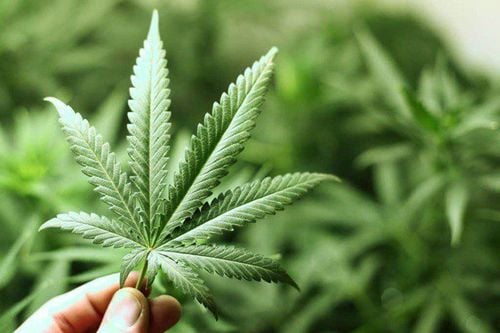
Cần sa là loại thuốc gây nghiện bị cấm hay gặp nhất
4. Synthetic narcotics
Synthetic narcotics are compounds with modified chemical derivatives of controlled substances. The potion has been slightly modified according to the actual situation to produce special mental state-altering effects. Many complications of synthetic drugs are caused by contamination of by-products during the laboratory-based manufacturing of these synthetic drugs.
The best known synthetic drug is ecstasy (3,4-methylenedioxymethamphetamine or MDMA), which is commonly used in gatherings. MDMA is taken orally. The drug induces a state of euphoria, increased desire to be valued, increased communication skills, and increased emotional need.
Adverse effects include teeth grinding, tachycardia, panic attacks, nausea and vomiting, nystagmus, inhibition of ejaculation, need to urinate. Frustration after taking MDMA lasts 1-3 days and is characterized by lethargy, muscle pain, jaw pain, depression, and loss of concentration. The more drugs are used, the more the toxic effect increases and the euphoric effect decreases.
5. Hallucinogens
Hallucinogens are defined as drugs that cause visual, auditory, tactile, and in some cases olfactory hallucinations.
Lysergic acid diethylamide (LSD) is the most common and strongest hallucinogen. It is an acid dot, block, doorway or blotting paper. LSD can cause odd behaviors that begin a few minutes after taking the drug, peak after 3-4 hours and last for about 12 hours such as: paranoia, depression, anxiety, and panic attacks associated with "troubles".
Patients with adverse reactions to hallucinogens may be confused with patients with schizophrenia. Patients with hallucinogen poisoning have:
No history of mental illness Tell friends they take medication Have visual and auditory hallucinations. On physical examination, the patient had obvious dilated pupils, tachycardia, sweating, and fever. Patients can often lower their voice in a closed area. For severe agitation, benzodiazepines can be used, sometimes haloperidol is needed for high agitation. Patients may experience long-term effects of LSD including flashbacks, psychosis, depressive reactions, and persistent personality changes.
6. Phencyclidine
Complications of phencyclidine abuse (PCP) are still seen in emergency rooms. PCP poisoning is often missed diagnostically and clinicians should be aware of PCP's potential for toxicity as well as signs and symptoms.
PCP poisoning can occur in adults and patients may not know they have been taking the drug. PCP can smoke along with cocaine. Low-dose PCP induces euphoria and sedation. Increased doses may cause hypertension, muscle spasticity, convulsions, and coma. Signs of nystagmus, rapid behavioral changes, and muscle spasticity help distinguish PCP poisoning from the excitability and hallucinations of an overdose. Urine drug testing helps in the diagnosis of PCP poisoning.
The treatment of PCP poisoning depends on the stage of poisoning. Mild poisoning can be treated with rest, monitoring, and benzodiazepines for agitated behavior. Benadryl may be used for dystonia-type reactions. Constriction should be avoided as it may increase the risk of rhabdomyolysis. Using activated charcoal can eliminate the drug and prevent reabsorption. Intravenous propranolol may be used for severe hypertension and tachycardia. The patient should be catheterized to prevent urinary retention. Taking furosemide (Lasix) may increase urine output and increase PCP excretion. The toxic effects of PCP can last up to 24 hours.
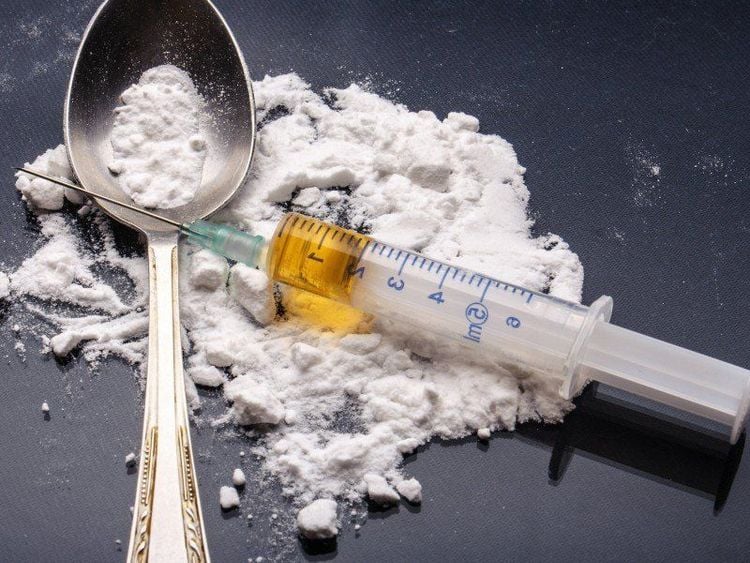
Ngộ độc PCP có thể xảy ra người trưởng thành và các bệnh nhân có thể không biết rằng họ đã dùng thuốc
7. Volatile substances
Abuse of volatile substances (gasoline, aircraft glue, bleach, Freon, ink, and lighter gas) is common among adolescent boys in urban areas. large and in economically underdeveloped regions and ethnic minorities. These substances are often used to "get on top" and they cause euphoria, lightheadedness during the arousal phase, and often hallucinations. These substances are inexpensive and easy to obtain.
Volatile substances are rapidly absorbed into the bloodstream, are lipid soluble, and cause pronounced central nervous system effects (most commonly depression). They often cause vomiting and nausea, tolerance and addiction (with withdrawal symptoms may develop). In emergency rooms, addiction to solvents can often misdiagnose acute psychiatric disorders due to mental fatigue and hallucinations. Solvent addiction should be suspected in adolescents who have a stroke while at a party. Permanent damage to the brain, liver, heart, kidneys, and bone marrow may be seen.
Airplane glue causes peripheral neuropathy, hand tremors and ataxia. Gasoline causes coughing and shortness of breath secondary to irritation of the respiratory tract. Hallucinations are common and often severe. Anemia, arrhythmia, and confusion can be seen in cases of gasoline poisoning. Nephrotoxicity can be detected by the presence of protein in the urine.
Freon is cardiotoxic and often causes cardiac arrhythmias.
Ink (trichloethylene) causes neurological diseases, headaches, cardiac arrhythmias, liver and kidney dysfunction and diffuse symptoms of the central nervous system.
When adolescents appear confused, the physician should smell solvents on the patient's clothing or breath. Abnormal combustion is indicative of cases of solvent addiction.
Tests may indicate an abnormal blood cell count. Urinalysis may show protein or blood in the urine. Liver enzymes may be elevated. In the case of chronic solvent addiction, chest X-ray showed an enlarged heart. Care for acute inhalation poisoning usually resolves symptoms within 4-6 hours. Benzodiazepines are indicated for use in convulsions, and haloperidol (Haldol) can be used for cases of strong agitation. Regular cardiac monitoring is essential.
Please dial HOTLINE for more information or register for an appointment HERE. Download MyVinmec app to make appointments faster and to manage your bookings easily.




